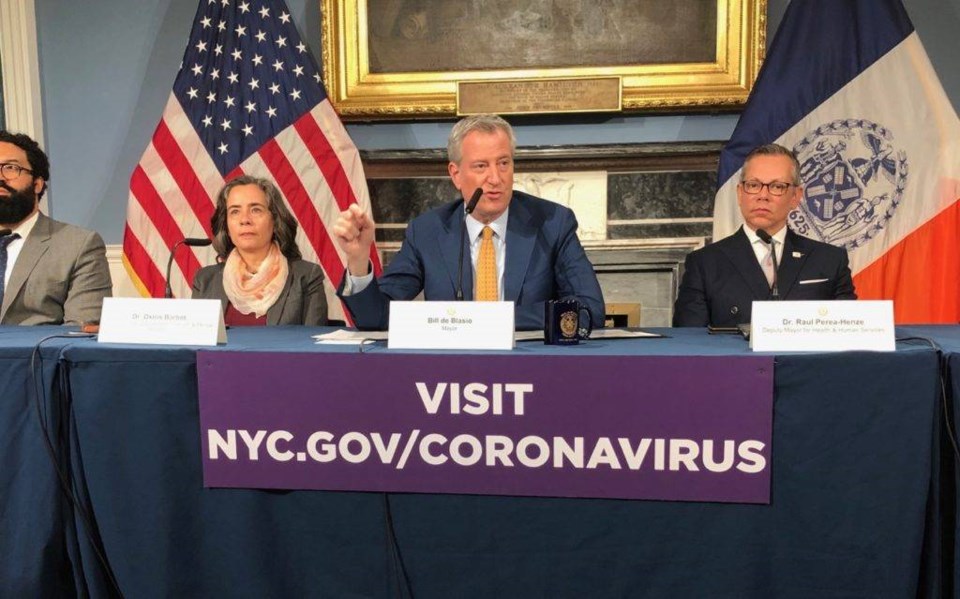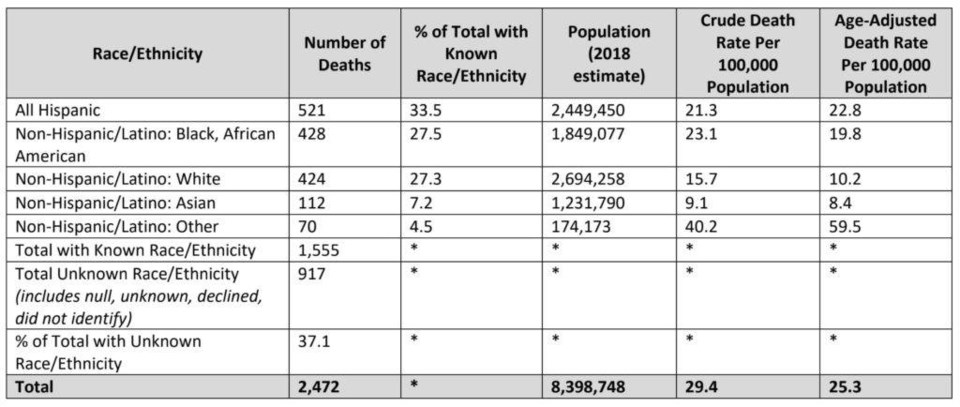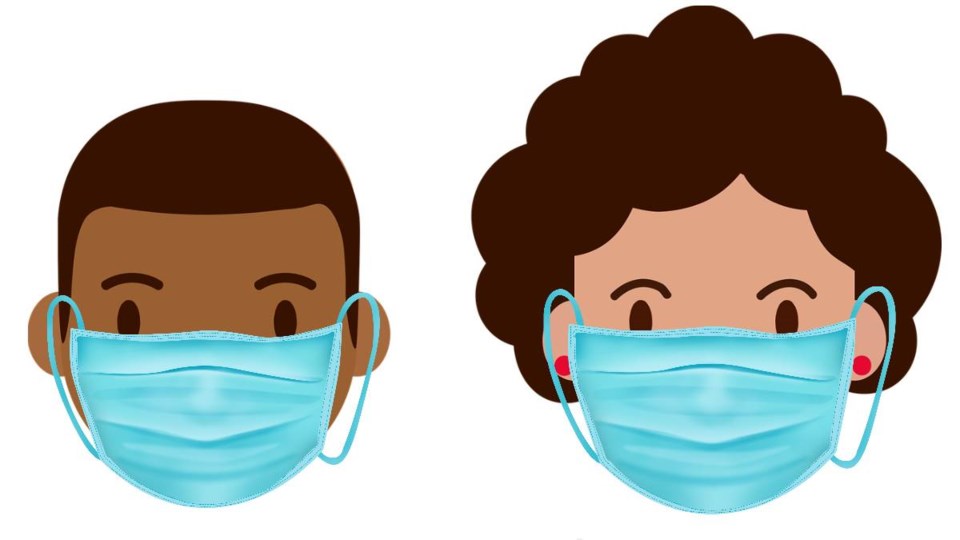Black and Hispanic New Yorkers are dying from COVID-19 at almost twice the rate of white New Yorkers, according to preliminary data released by the City this morning.
Mayor de Blasio said at his press conference that although this is a disease hurting every zip code, the information points to very clear inequalities.
"The truth is that in many ways the negative effect — the pain it's causing, the death its causing — tracks with other profound healthcare disparities that we have seen for years and decades in this city," he said.
More than 4,000 people have died from COVID-19 in New York City, and that number is thought to be far higher given many of those who have died at home haven't been counted.

Photo: BK Reader
The data released by the City shows 34 percent of COVID-19 deaths have been Hispanic New Yorkers, who account for 29 percent of the city's total population, 28 percent were Black New Yorkers, who make up 22 percent of the population, 27 percent were White New Yorkers, who make up 32 percent of the population and 7 percent were Asian New Yorkers, who make up 14 percent of the population.

Black New Yorkers have the highest crude death rate at 23.1 out of 100,000 people. Hispanic New Yorkers have the second highest rate at 21.3 out of 100,000. These rates are far higher than for White New Yorkers who have a crude death rate of 15.7 per 100,000. Age adjusted rates show the Black and Hispanic communities have a death rate twice that of the white community.
De Blasio said the preliminary data was based on the death certificates of 63 percent of COVID-19 cases where racial data was available, and collected by the city's Health Department.
He said what the city was learning was cause for real concern and showed how many people have struggled to get the healthcare they need. On top of systemic healthcare failures, according to the Economic Policy Institute only 16.2% of Hispanic workers and 19.7% of Black workers can telework, increasing their chances of exposure.

"So many people have lived with chronic conditions all their lives so often associated with challenges like poverty," de Blasio said. "We're seeing folks who have struggled before really being hit particularly hard by the Coronavirus, that's a blatant inequality and we don't accept it, which means we need to come up with new ways to fight what is now a documented disparity."
De Blasio said the City was going to double down by supporting hospitals, launching a multimillion dollar public awareness campaign in 14 languages focused on communities of color, and by doing grassroots outreach to community clinics.
"The public hospitals are the greatest guarantee we have that there will be fairness in saving lives," he said.
The same trend is happening across the country, with Black communities being far more at risk than other racial groups.
On Tuesday the US Surgeon General Jerome Adams said that African Americans were at greater risk of contracting the potentially deadly illness, and were more likely to have pre-existing conditions such as diabetes, high blood pressure and heart disease and lack of access to health care.




